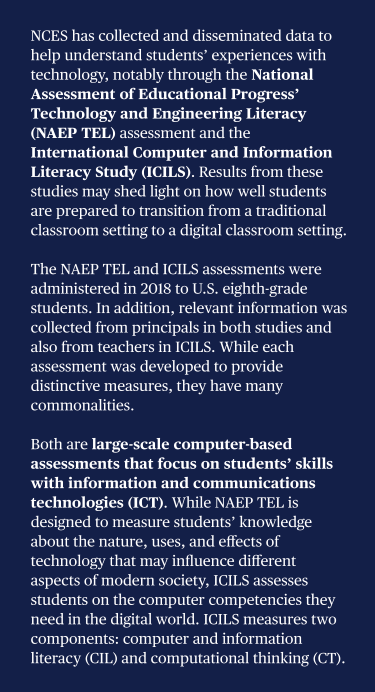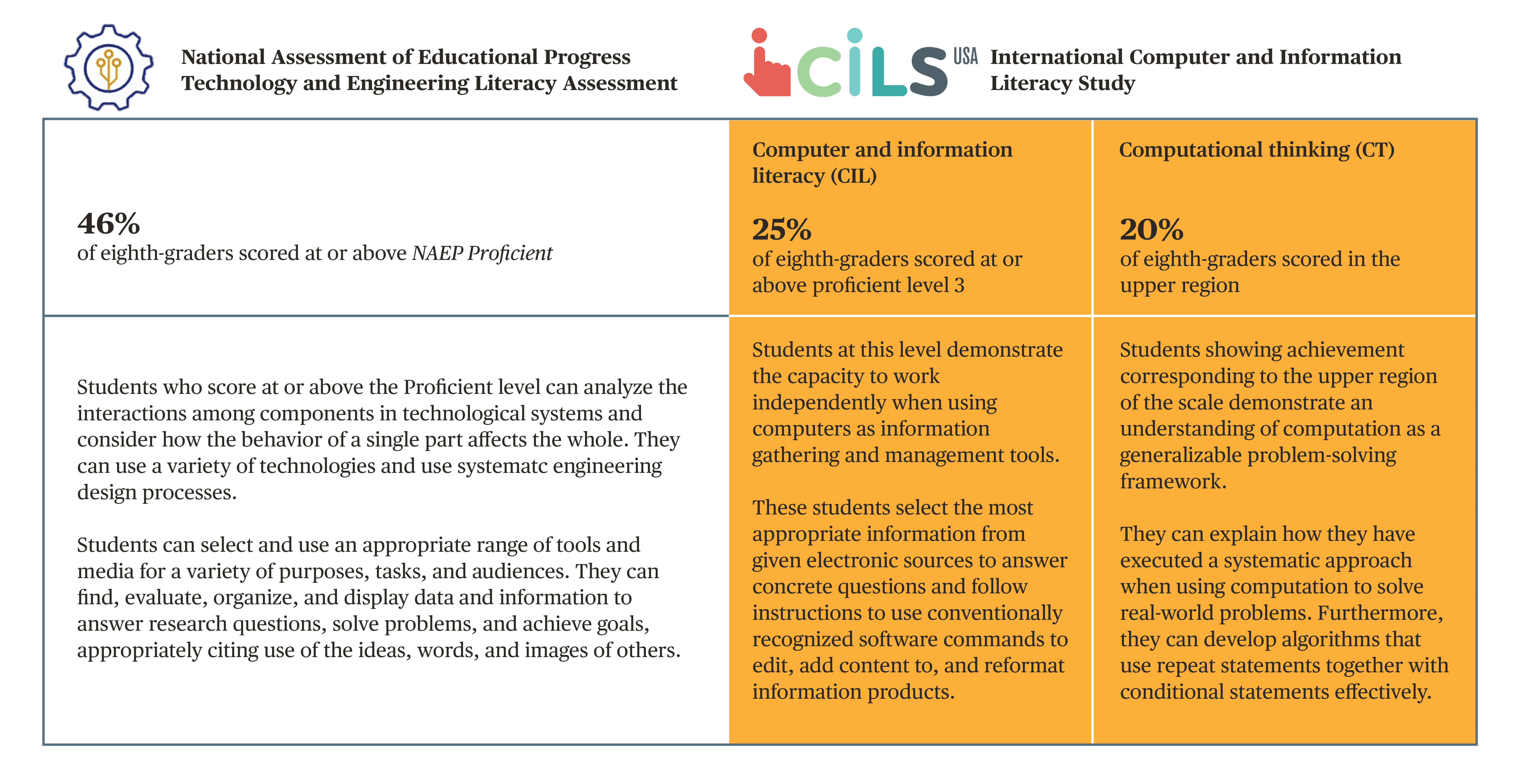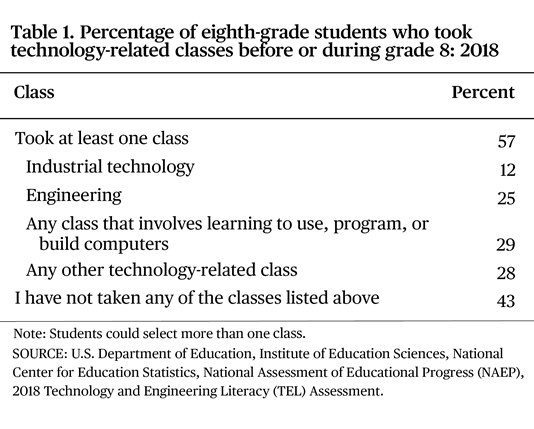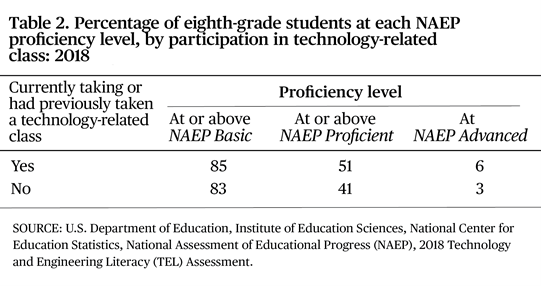
Across the country in 2020, students, teachers, and parents have had to adapt to changes in the delivery of education instruction due to the coronavirus pandemic and turn to information and communication technologies (ICT) to learn, interact, and assess progress. It is important that we are able to assess students’ abilities to understand and use technology now more than ever. This post, the first in a three-part series, discusses the results of two technology-focused assessments, NAEP TEL and ICILS, which NCES administered in 2018 (see textbox for more information about these assessments).
Students’ performance on NAEP TEL and ICILS
According to the 2018 NAEP TEL, 46 percent of U.S. eighth-grade students scored at or above the NAEP Proficient level, meaning that they were able to demonstrate the selection and use of an appropriate range of tools and media (figure 1). According to the 2018 ICILS, 25 percent of eighth-grade students scored at or above proficiency level 3 for computer and information literacy—that is, they demonstrated the capacity to work independently when using computers as information-gathering and management tools. In addition, 20 percent of eighth-grade students scored in the upper region for computational thinking, meaning that they demonstrated an understanding of computation as a problem-solving framework.
Figure 1. Percentage of eighth-grade students identified as at or above proficient, by assessment: 2018

There are many factors that may affect performance on these assessments, such as access to technology, devices, hardware, and software; access to learning opportunities using technology; amount of experience using technology; and attitudes toward technology.
Student’s participation in technology-related classes
For NAEP TEL, students were asked if they were currently taking a technology-related class or if they had taken one in the past. In 2018, about 57 percent of U.S. eighth-grade students were either currently enrolled in or had taken at least one technology-related class, such as industrial technology, engineering, or a class that involved learning to use, program, or build computers (table 1). In addition, a higher percentage of students who had completed a technology-related class before or during eighth-grade scored at or above the NAEP Proficient level, compared with students who had not completed such a class (table 2).


Overall, both assessments show that a portion of students demonstrated the knowledge and skills necessary to meet the assessment’s defined proficiency measures, although more than half reported taking technology-related classes before or during eighth grade.
It should be noted that the data presented here were collected in 2018; any changes since then due to the coronavirus pandemic or other factors are not reflected in the results reported here. The NAEP TEL and ICILS samples both include public and private schools, but the two assessments use different methods for reporting student performance. Data from these assessments do not support any causal inferences as they are not experimental studies. Data reported in the text and figures are rounded to the nearest integer.
Resources for more information:
By Mary Ann Fox, AIR, and Taslima Rahman, NCES